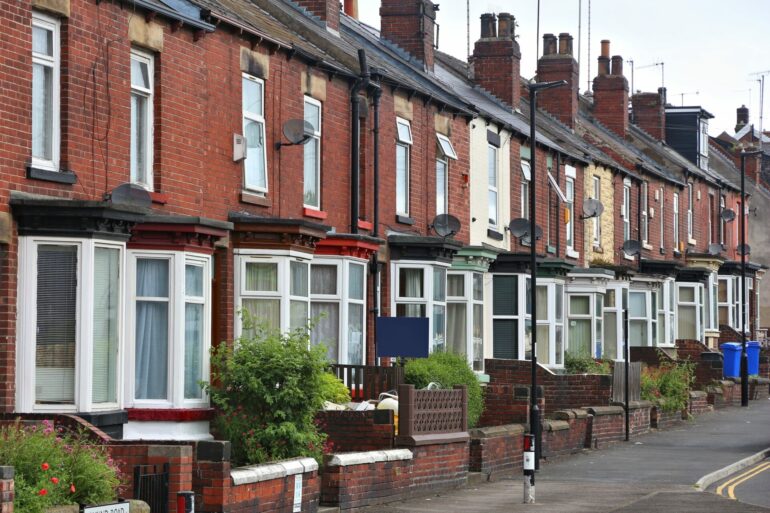RICS Residential Survey shows that while the housing market remains downbeat, there are some indications of a more stable outlook emerging in 2023.
The headline reading for new buyer enquiries has rebounded to a net balance of -29%, compared with -45% last month, signaling a decline in demand, but it is the least negative result since July 2022.
Respondents also noted a less adverse trend in the volume of fresh listings coming onto the sales market, with the net balance improving to -4%, compared with -12% in January and -22% in December.
However, the number of market appraisals conducted in February was still below that found in the equivalent period a year ago.
The newly agreed sales indicator improved from a net balance of -36% to -26%, but the time taken to complete a sale continues to edge upwards and is now approaching 19 weeks.
The pricing environment remains challenging, with the headline price balance series stuck deep in negativity, with a net balance of -48%.
While the majority of respondents suggest that prices are being agreed within 5% of the ask price rather than anything significantly greater, around 60% of respondents suggested that prices were being agreed at below the ask price in the mainstream market.
In the lettings market, tenant demand continues to increase, while landlord instructions continue to decline, returning a net balance of -13%.
The headline rent expectations reading remains at a relatively elevated level of +45%. Looking at the results for the questions around medium-term expectations, the price outlook appears to be steadying with an increase of around 15% projected on a five-year view despite the current headwinds.
While the key activity metrics all remain negative, they are less so than previously, indicating a slightly more stable picture emerging through the course of 2023.
The survey also indicates that the housing market will continue to slip over the coming three months, as demonstrated by the near-term sales expectations net balance coming in at -47%.
However, at the 12-month time horizon, the sales outlook looks to be more stable, with a net balance of -8%.
Sarah Coles, head of personal finance, Hargreaves Lansdown, said: “Things are getting worse more slowly, but while the agents in the RICS report are finding reasons for optimism, this may be premature.
“Buyer and seller numbers continued to drop, agreed sales fell, and prices were on their way down. In order to shift properties, most people are now having to accept an offer. Despite pockets of enthusiasm, these aren’t signs of a rising market. When you add in the Bank of England’s figures showing rock bottom levels of mortgage approvals in January, it means we may well see more decline in the months to come.
“The report highlighted the impact of stretched mortgage affordability, and to make matters worse, there have been subtle changes in the mortgage market which could make life even more difficult. After months of rates slowly falling from the peak, we have seen some of the most competitive deals pulled from the market.
“Rate expectations are shifting slightly, as there are growing concerns that higher inflation might last for longer than expected. This is moving the swaps market very slightly, making it more expensive for mortgage lenders to price a fixed rate – so that some of the best deals are off the table. This hasn’t moved the dial on average rates yet, but is one to watch.
“This is not only putting pressure on buyers, but higher mortgage rates could mean more forced buyers as time goes on. For remortgagers, rates are way ahead of their levels back when they last fixed.
“As a result, the HL Savings & Resilience Barometer shows that remortgaging will eat up an extra 3.1% of their income – which is the equivalent of an 80% rise in their energy bills. It means 2 million people will be spending so much of their income on the mortgage that they’re at risk of falling into arrears.
“Looking at their wider resilience, 650,000 of them don’t have the savings to protect them from this attack on their household budgets. With nowhere to go, we could see them flood the market and push prices down.
“For renters meanwhile, there’s no let up. While the number of landlords leaving the market has slowed, they’re still packing up and heading out – while tenant numbers continue to grow. It means more rent rises are on the horizon – which isn’t just miserable for renters, it also bodes ill for the stickiness of inflation.”
Further reaction
Tomer Aboody, director of property lender MT Finance:
“After some months of constant negativity surrounding the housing market with buyers either stalling or waiting for mortgage products to stabilise so that they are more confident they can afford them, we are finally seeing some positivity with a slowdown in the decline.
“As Swap rates stabilise, leading to lower fixed-rate mortgages, buyers are slowly returning and looking to secure their home now that they regard mortgages as being more affordable. With hopes of inflation being reduced this year as the Prime Minister pushes for a more stable and improved economy, confidence is creeping back into the market.”
Jeremy Leaf, north London estate agent and a former RICS residential chairman:
“These historically-accurate RICS figures confirm that the housing market continued to slow and became more price-sensitive in February but showed few signs of a correction.
“Worries about the cost of living and availability of mortgages mean homes are taking longer to sell and keeping prices in check. However, recent falls in lending rates, inflation and increasing property choice is contributing to a readjustment in the previously severe imbalance between supply and demand which we expect to continue into the spring.
“On the lettings side, supply is slowing improving partly in response to last year’s sharply rising rents but is still not sufficient to meet demand, particularly for one and two-bedroom flats.
“On the other hand, we’ve also seen concerns about the cost of living keeping a lid on spiralling rents. Tenants may be increasingly feeling the pinch but many landlords believe they have no option but to increase rents to meet higher mortgage repayments and/or building costs in particular.”



